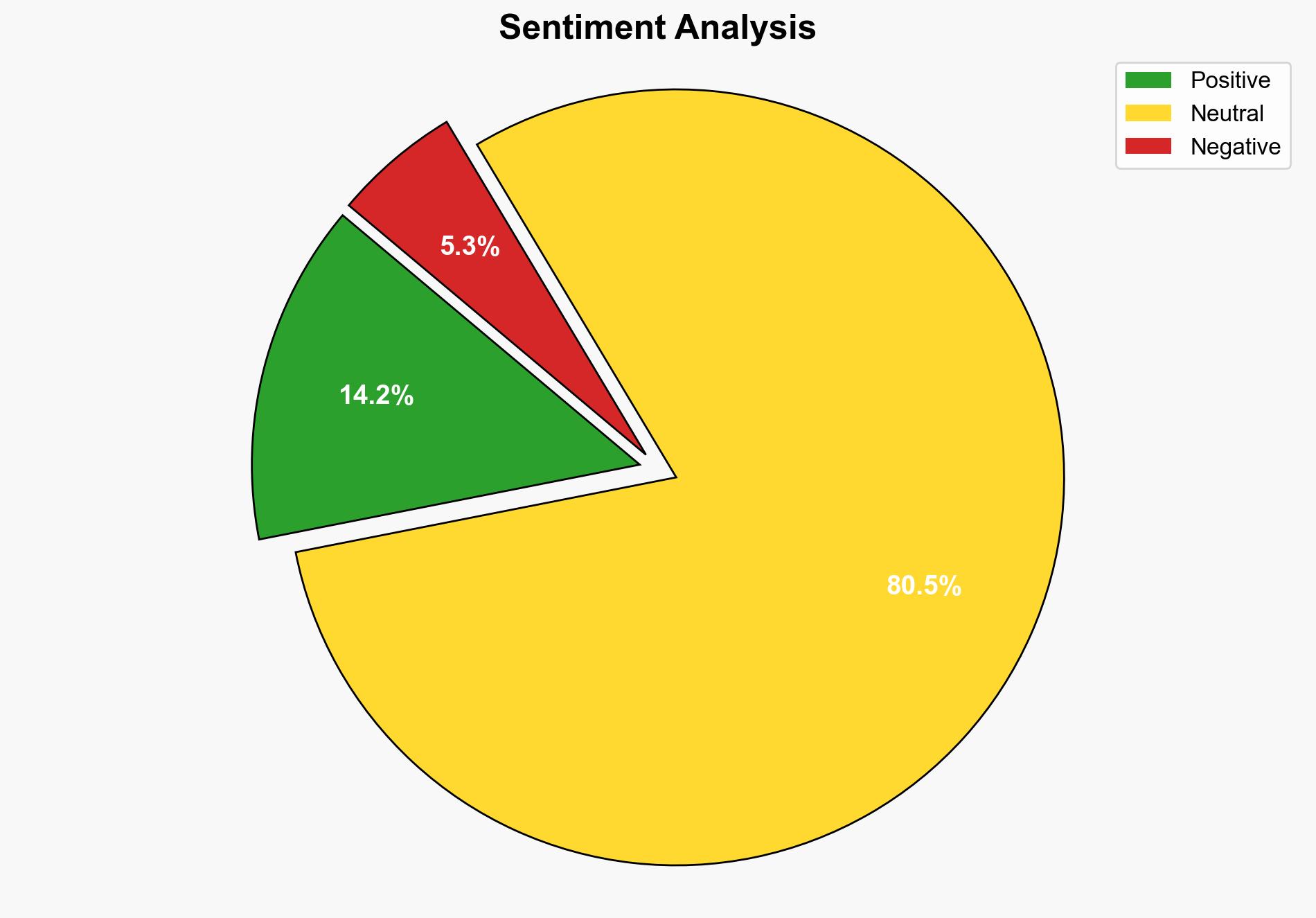Cloud Hypervisor Will Block AI Generated Code Raises x8664 VM Limit To 8192 vCPUs – Phoronix
Published on: 2025-09-13
Intelligence Report: Cloud Hypervisor Will Block AI Generated Code Raises x8664 VM Limit To 8192 vCPUs – Phoronix
1. BLUF (Bottom Line Up Front)
The strategic judgment indicates a moderate confidence level that the decision by Cloud Hypervisor to block AI-generated code and increase VM limits is primarily driven by security concerns and the need to maintain control over code quality. The most supported hypothesis is that this move is a proactive measure to mitigate potential security vulnerabilities associated with AI-generated code. Recommended action includes monitoring the adoption of these changes and assessing their impact on industry standards and security practices.
2. Competing Hypotheses
1. **Hypothesis A**: Cloud Hypervisor’s decision to block AI-generated code is primarily a security measure aimed at preventing potential vulnerabilities and maintaining code integrity.
2. **Hypothesis B**: The decision is a strategic move to differentiate Cloud Hypervisor from competitors by emphasizing human-generated code quality and security, potentially appealing to a niche market concerned with AI-related risks.
Using the Analysis of Competing Hypotheses (ACH) 2.0, Hypothesis A is better supported due to the emphasis on security and the removal of deprecated features like Intel SGX, which aligns with a focus on reducing vulnerabilities.
3. Key Assumptions and Red Flags
– **Assumptions**: It is assumed that AI-generated code inherently poses higher security risks. It is also assumed that the market will value the increased security over the potential efficiency gains from AI-generated code.
– **Red Flags**: The lack of detailed evidence on specific vulnerabilities associated with AI-generated code could indicate a potential overestimation of its risks. Additionally, the absence of competitor responses might suggest an underestimation of market dynamics.
4. Implications and Strategic Risks
The decision could set a precedent for other open-source projects, potentially leading to a broader industry shift towards stricter code contribution policies. This may influence the balance between innovation and security in software development. A potential risk is the alienation of developers who rely on AI tools, which could slow down innovation and adoption rates.
5. Recommendations and Outlook
- Monitor industry reactions and competitor strategies to assess the broader impact of Cloud Hypervisor’s policy change.
- Engage with stakeholders to evaluate the effectiveness of the new policies in enhancing security without stifling innovation.
- Scenario-based projections:
- Best Case: The policy enhances security and attracts security-conscious users, setting a new industry standard.
- Worst Case: The policy alienates developers and slows adoption, leading to a competitive disadvantage.
- Most Likely: The policy is adopted by a niche market, with gradual industry acceptance as security concerns grow.
6. Key Individuals and Entities
No specific individuals are mentioned in the source text. The focus remains on Cloud Hypervisor as an entity.
7. Thematic Tags
national security threats, cybersecurity, software development, open-source policy, AI ethics




